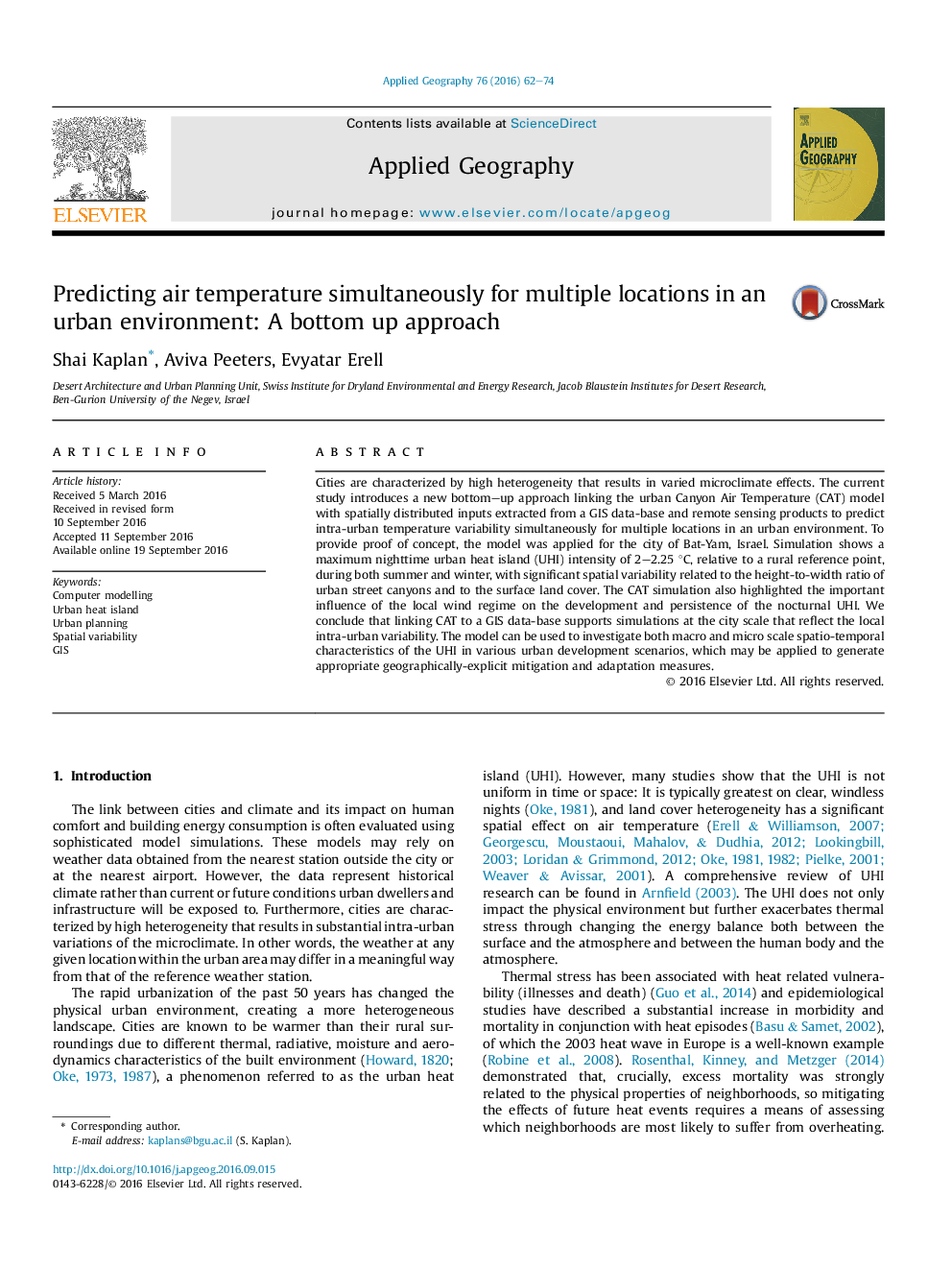| کد مقاله | کد نشریه | سال انتشار | مقاله انگلیسی | نسخه تمام متن |
|---|---|---|---|---|
| 6458534 | 1421041 | 2016 | 13 صفحه PDF | دانلود رایگان |
- A new bottom-up approach linking the CAT model with a GIS data-base is introduced.
- The link relies on a methodology for extracting 3D urban characteristics using GIS.
- Intra-urban temperature variability is analyzed and visualized at 150Â m resolution.
- UHI spatial variability is related to H/W ration and surface land cover.
- Local wind regime impacts the development and persistence of the UHI.
Cities are characterized by high heterogeneity that results in varied microclimate effects. The current study introduces a new bottom-up approach linking the urban Canyon Air Temperature (CAT) model with spatially distributed inputs extracted from a GIS data-base and remote sensing products to predict intra-urban temperature variability simultaneously for multiple locations in an urban environment. To provide proof of concept, the model was applied for the city of Bat-Yam, Israel. Simulation shows a maximum nighttime urban heat island (UHI) intensity of 2-2.25 °C, relative to a rural reference point, during both summer and winter, with significant spatial variability related to the height-to-width ratio of urban street canyons and to the surface land cover. The CAT simulation also highlighted the important influence of the local wind regime on the development and persistence of the nocturnal UHI. We conclude that linking CAT to a GIS data-base supports simulations at the city scale that reflect the local intra-urban variability. The model can be used to investigate both macro and micro scale spatio-temporal characteristics of the UHI in various urban development scenarios, which may be applied to generate appropriate geographically-explicit mitigation and adaptation measures.
Journal: Applied Geography - Volume 76, November 2016, Pages 62-74
